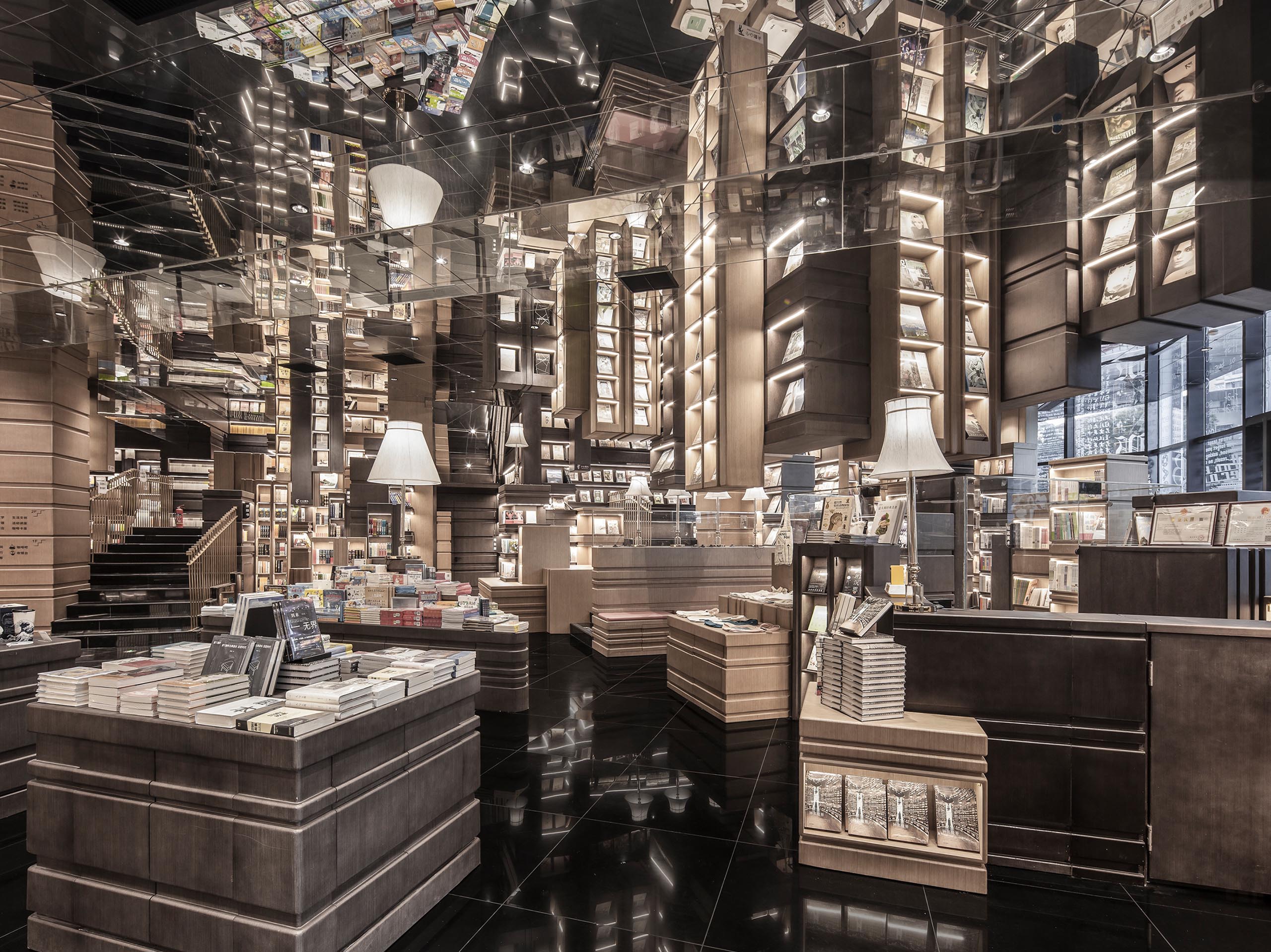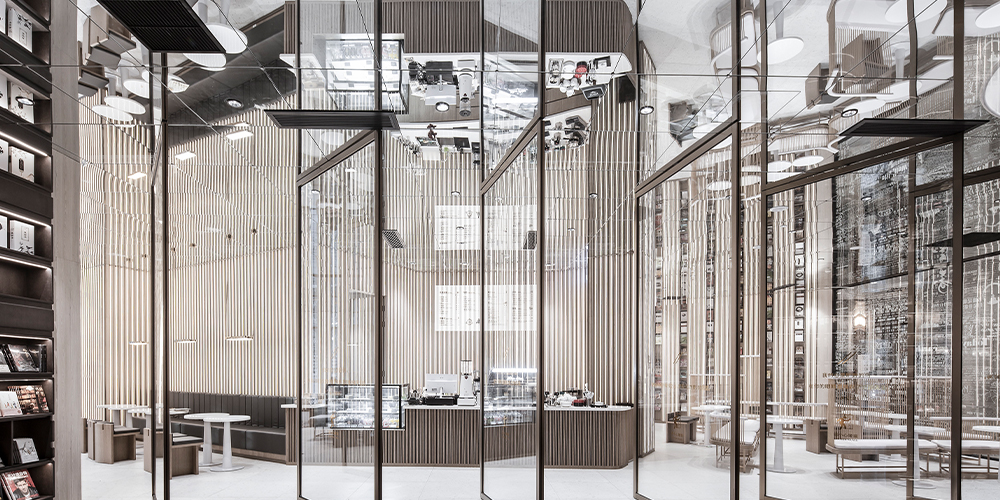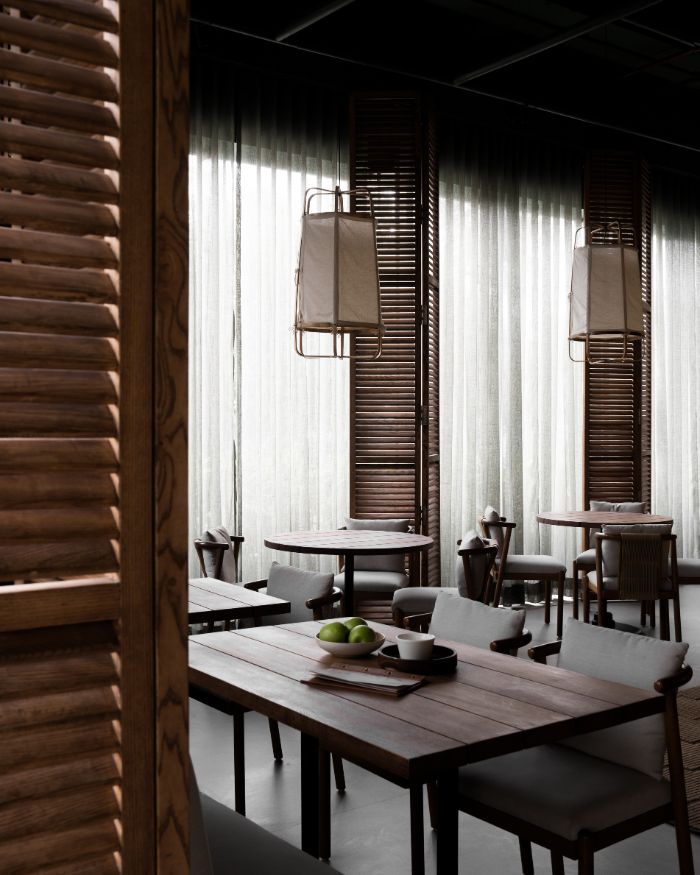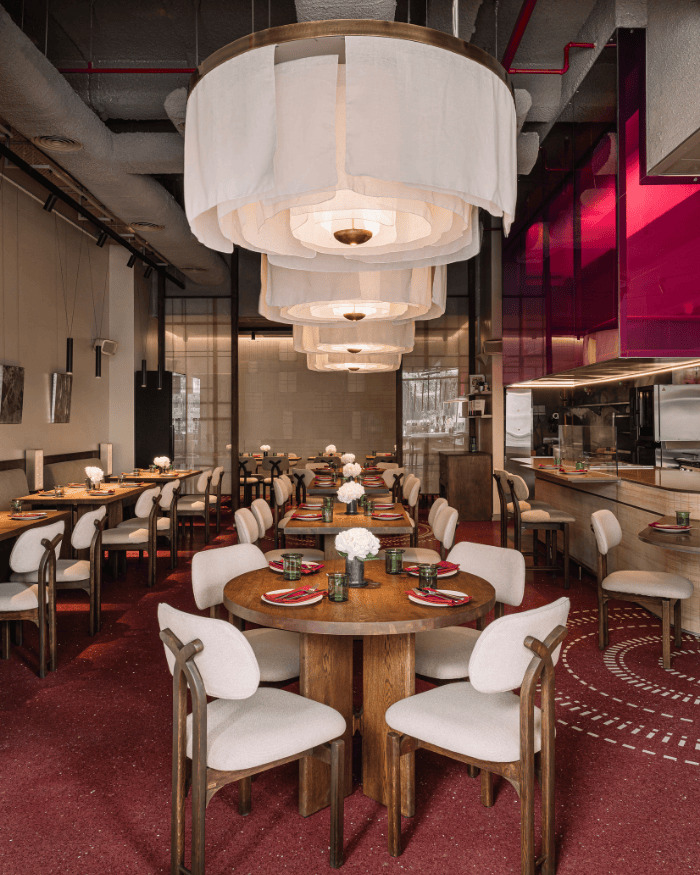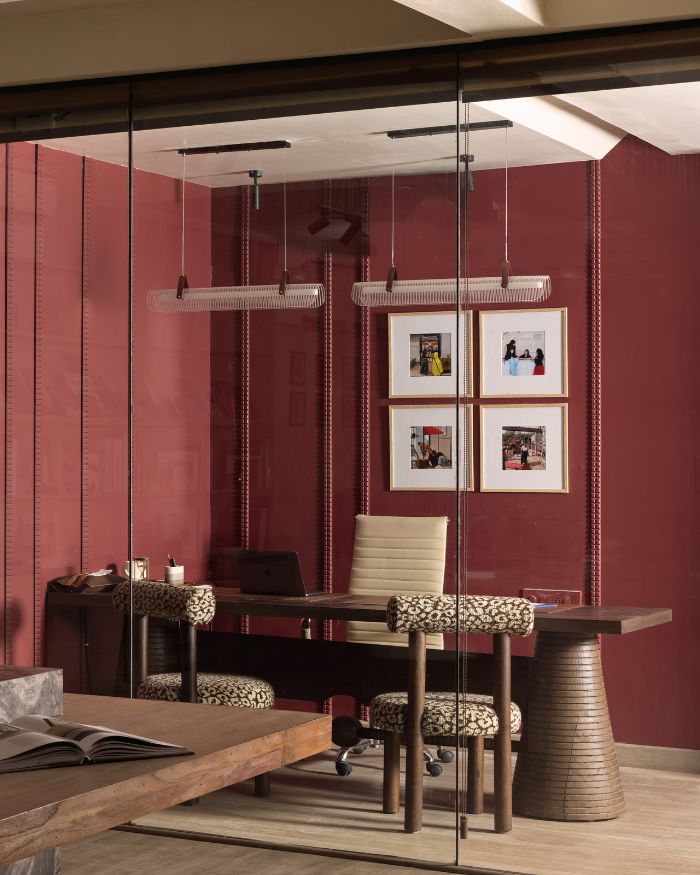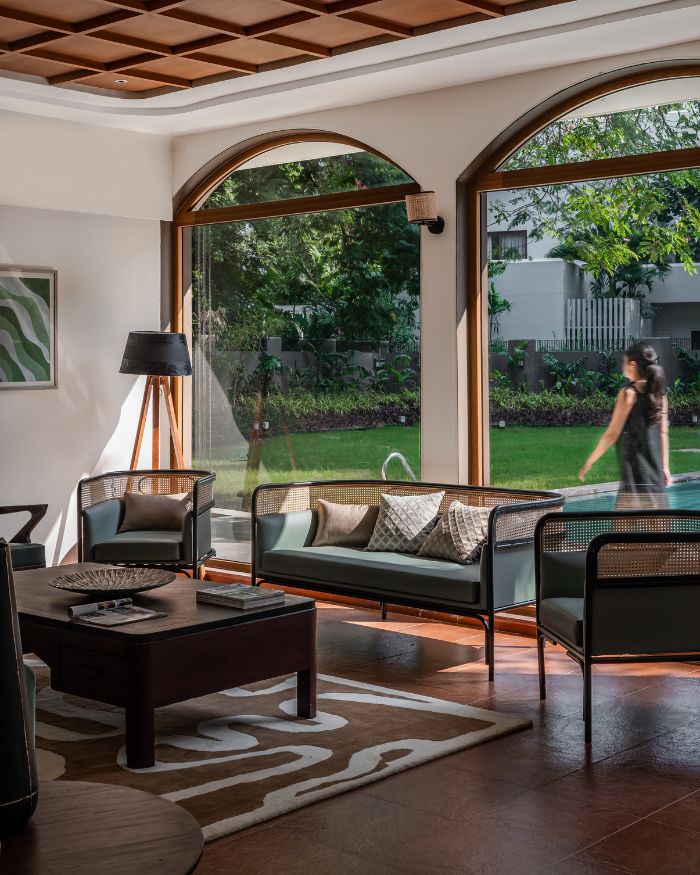Located on the coast of the East China Sea, Zhongshuge has admirably interpreted the contemporary culture of Ningbo, China, celebrating the vibrant heritage of the city. Designer Li Xiang uses his cutting-edge vision and creates a unique environment with a vivid expression and bold outline.
The entrance features a glass curtain wall embedded in its thick stone facade, which extends into a coffee area. Walking through the enormous glass door, the space transforms as the light colour expanse and its fine grid book wall come into view. Here, armchairs and leisure seats are scattered around for easy seating.
The warm and white light in front of the sofa adds to the ambience, giving both the books and its readers a vibrant and vivid atmosphere to settle in.

On the other side of the glass wall lies another visual marvel. Walnut and black-hued bookshelves overlap to mimic towering rocks, long washed by running water. The designer integrates the texture of rocks into the surface of the bookshelves for a mesmerising appeal. The bookshelves are arranged unevenly and the ceiling cabinets are scattered, providing room for optical exploration. The composition instantly draws its readers into the giant landscape paintings that display the cultural heritage of Ningbo.
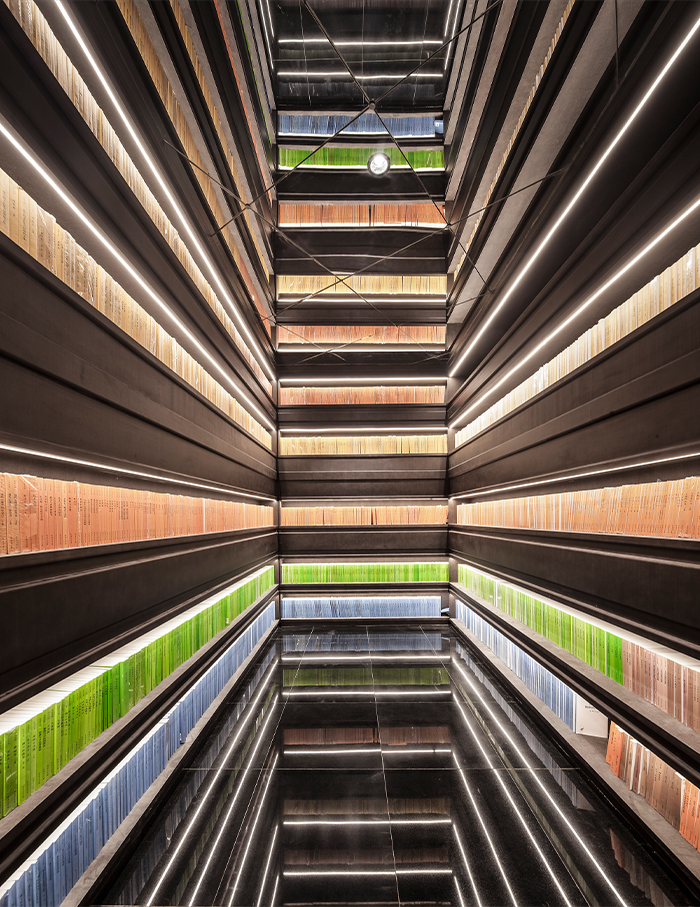
A ladder reaches the upper level, where a multidimensional stacking of large bookshelves reflects the designer’s approach to the bookshelves. The clever use of a mirror here broadens the visual experience within the limited space.
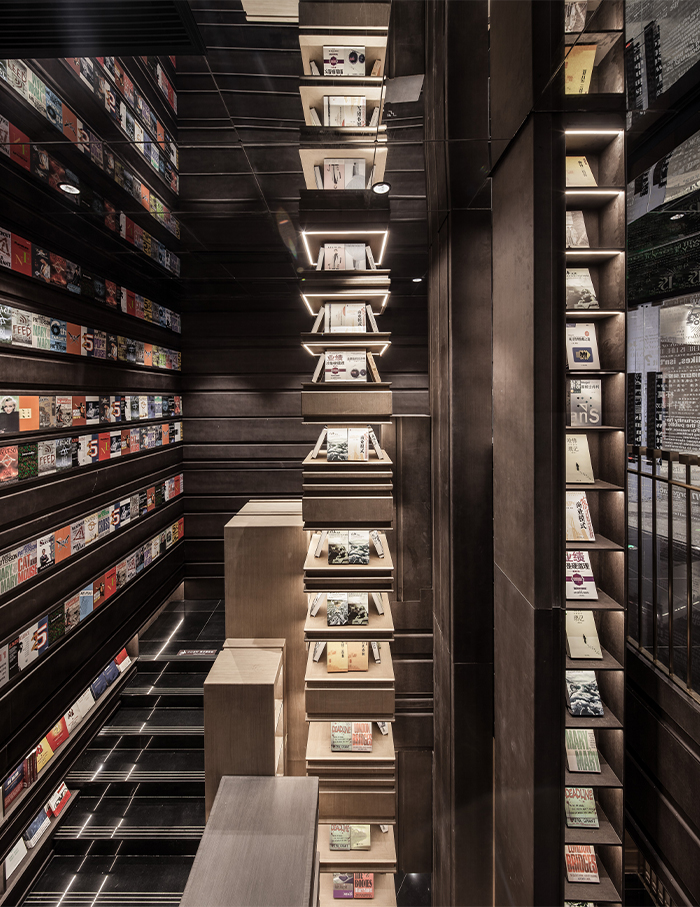
The bookshelves that are used to display books are also integrated into the storage cabinets. Those at the lower level are used as “seats” on the steps. Under the warm light, an elegant and quiet reading atmosphere is created, which perfectly condenses the reader’s concentration, increases the value of people’s time and revitalises the operation of the bookstore.
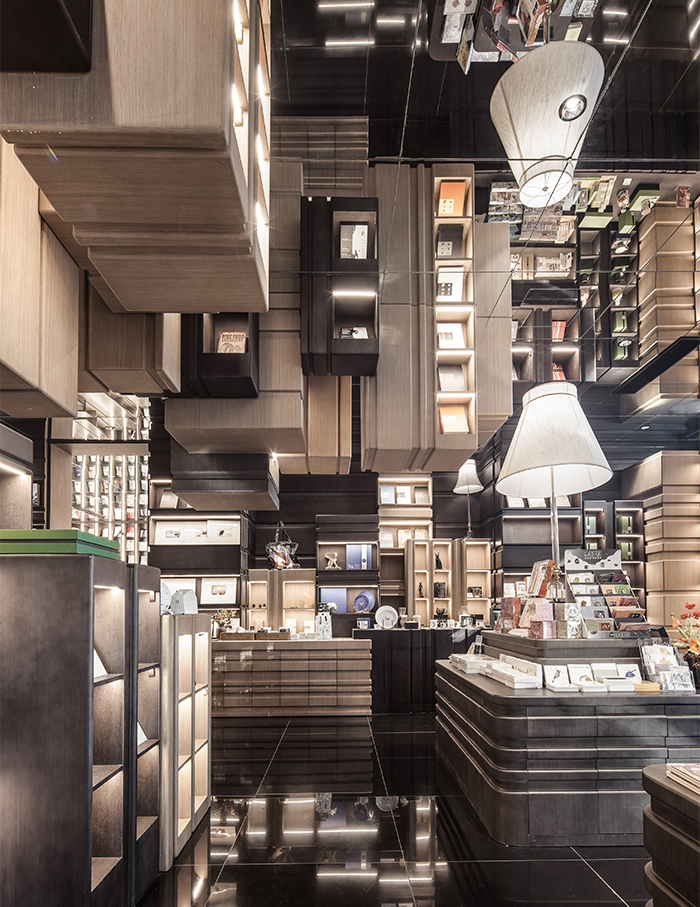
Taking into account the vertical height of the forum area, the designer creates a double lecture hall that is high in the middle and lower on both sides. The high spot of the hall provides a bird’s eye view of the whole space bordered with book walls. It effectively satisfies different demands of readers by creating a picturesque backdrop and maximising space utilisation and practicability.
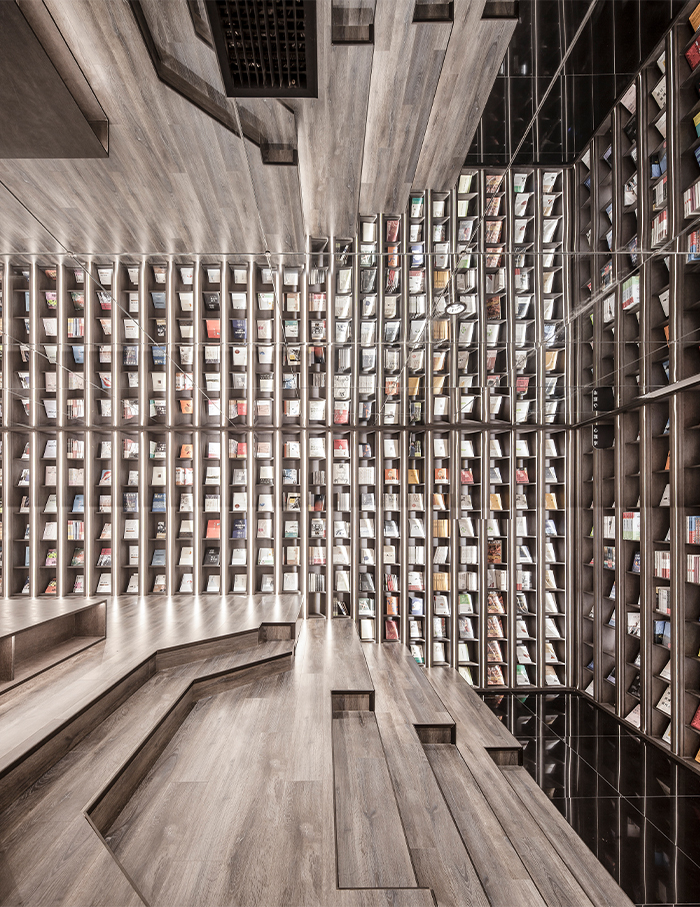
The cafe on the second floor features bookshelves arranged in an orderly manner around windows to create chic little reading nooks. Under the mirrored ceiling, the height of the different levels doubles visually.
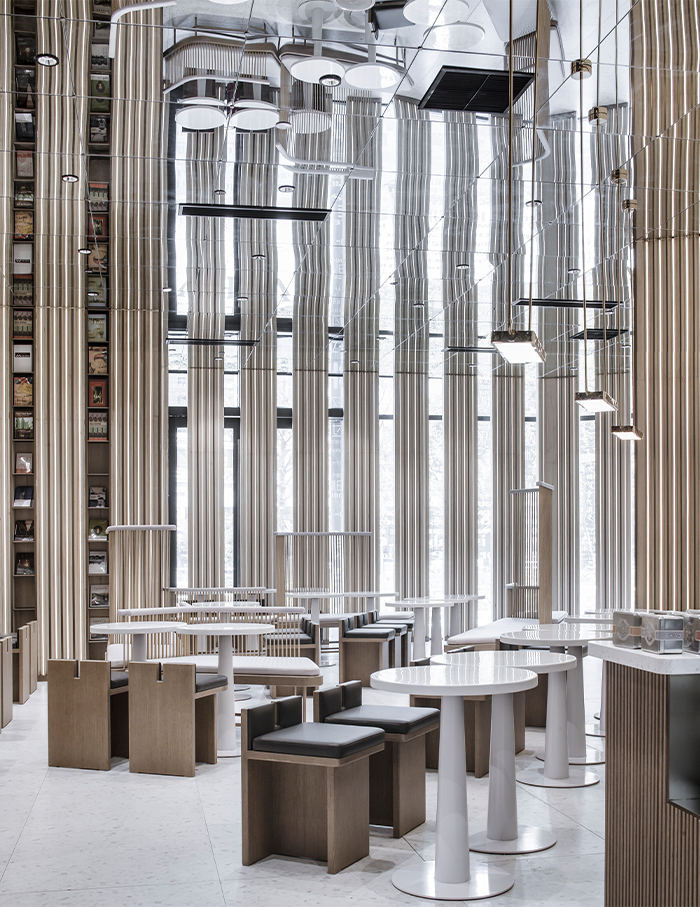
The clean and simple teaching auxiliary area provides a serene temple-like space. The facade wall of the arch shape extends to the corner of the conference room on both sides. The retro-European style sublimates the reading experience and adds a sense of tranquillity.
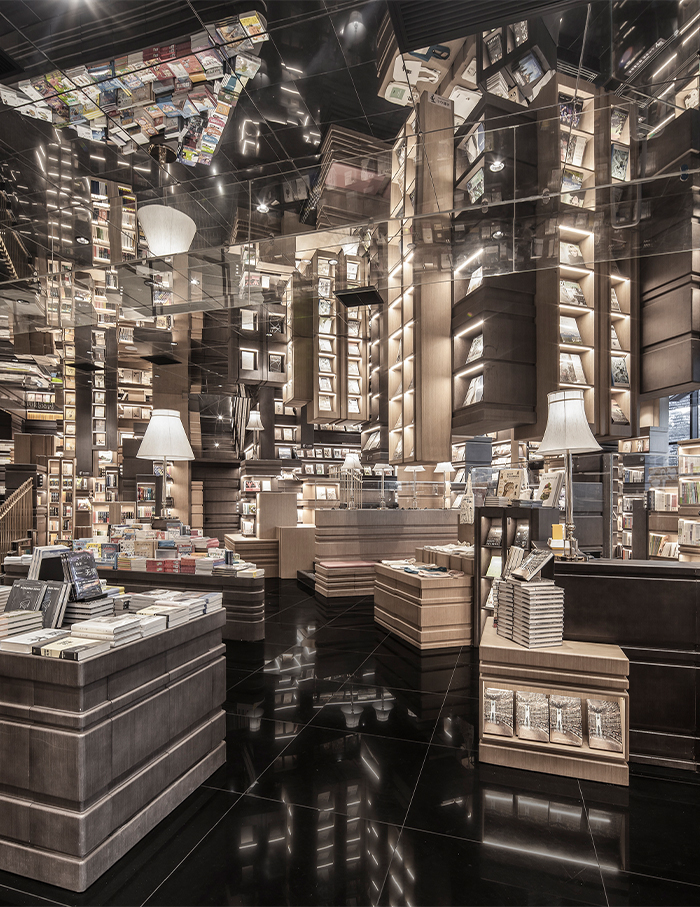
Playful compositions including quirky shapes and vibrant colours depict the aesthetics of the children’s area. The reading tables inspired by the rattle drum add a touch of humour, while the ladder and wall partition provide additional seating.

Music tracks—as well as bookshelves shaped like Chinese instruments—convey a symbol of customary etiquette and poise native to Ningbo. This originates from the designer’s rich feelings towards traditional culture, as he aims to form an ideal environment for children.

